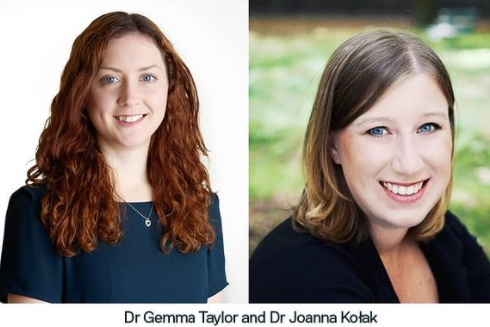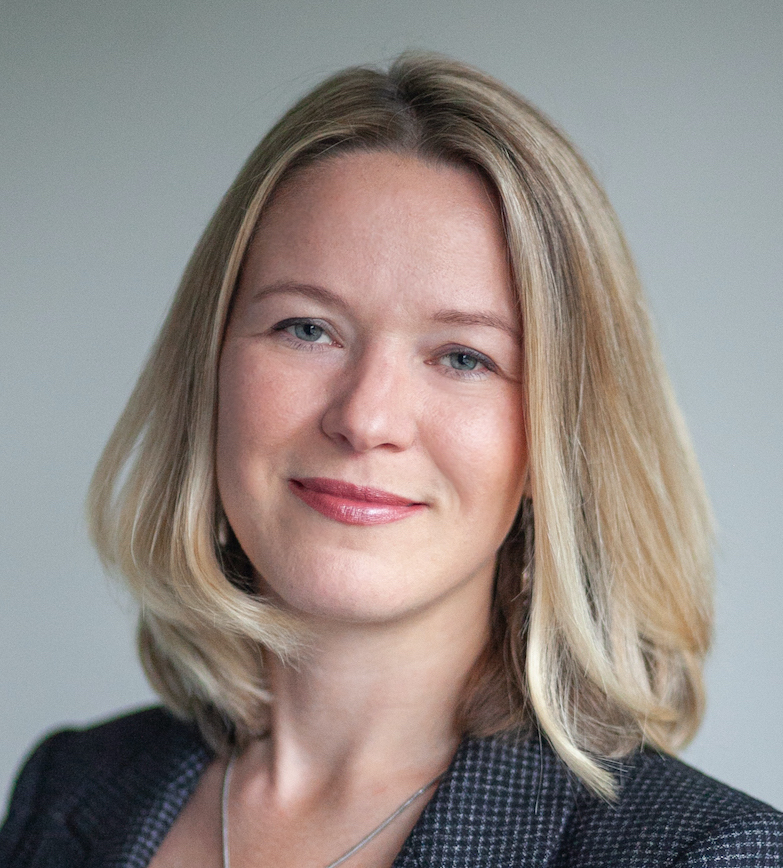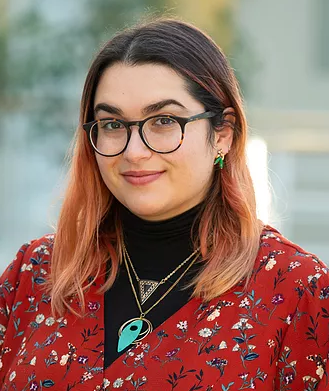This article was written by Eleanor Thornton, a student from Wilmslow High School in Manchester, who did a one week work placement in Psychology Department at the University of Salford (including some work for the Salford Cognitive Development Lab) in July 2022. Eleanor is interested in how hearing loss can impact on children’s mental health.
Deafness is when a person cannot understand speech through hearing. The ear has two main functions: it helps us to balance, and it converts sounds into signals that the brain can understand. Around 11 million people across the UK suffer with hearing loss, with 50,000 of these being children. Children with hearing loss can struggle with day-to-day life. They are more likely to have academic difficulties right through to problems with aggression and anxiety. It is estimated that 5-19% of children and adolescents in the UK have an anxiety disorder. Anxiety is known for making it harder to try new things and to reach your full potential because of this. But don’t worry (ironic, isn’t it?), there are things you can do to help your deaf child flourish and reduce the impact of their impairment.
So, to start off: is there a link between hearing loss in children and anxiety? In a systematic review of 25 studies, evaluating 17,135 people with hearing loss, Shoham and collaborators searched through electronic databases, using specific criteria, to compare different studies relating hearing loss and anxiety. The researchers found that anxiety was higher in hearing impaired people in 8/10 studies compared against a hearing control group, meaning children who are deaf or hard of hearing are 80% more likely to suffer from anxiety disorders compared to their hearing friends. This review then concludes that suffering from anxiety is linked to hearing loss explicitly and the severity of the impairment is associated with the extent of anxiety. Although this situation sounds unfortunate, it was suggested that to decrease the risk of your child developing anxiety (caused by hearing loss), the easiest way was to simply reduce the impairment. This may involve different types of hearing aids or the teaching of sign language, with the second option not improving the level of hearing per se, but instead increasing the communication ability of the child (read on to see about this in more detail). This targets the social isolation of the child, as this, along with low popularity status, has been shown to predict poor mental health and wellbeing in the long-term future of the child’s life.

In another study, Bouldin and colleagues found that children with a hearing impairment were more likely to be exposed to peer victimisation and bullying. Linking to this, bullying has been shown to influence the development of anxiety in any child – regardless of hearing ability. While a long-term fix for this would be to address the stigma behind hearing loss, a quicker, more manageable improvement is to give the child a sense of community. This could be through joining a club or a society, and it would be even better if the child was surrounded by others, around their age, who also have hearing loss. By giving the child this sense of belonging, along with an outlet for their emotions (e.g., through exercise), you reduce the feeling of social isolation and peer victimisation, as the child is introduced to peers with similar interests.
It has been established that anxiety is also linked to language development, or rather the lack of. Netten and colleagues found that communicative abilities of deaf or hard of hearing children are lower than peers of the same age who have average hearing. Building on this, a study by Stevenson and colleagues found that deaf or hard of hearing children who had poor language and reading skills in childhood were more at risk of developing emotional and/or behavioural difficulties compared to their hearing peers. Both studies found a link between social functioning (language and communication ability) and behavioural problems. As well as this, a critical period of the first five years of life was found by Murray and colleagues. Deaf children are at risk of language deprivation at this age, but a positive is that natural signed languages have the same developmental benefits as spoken language. So, a way to reduce the likelihood of your child developing anxiety would be to teach them sign language while also becoming fluent in it yourself. This allows a fully accessible language that enables your child to communicate their emotions effectively – reducing social isolation if we were to go back to the earlier point.
So, to summarise: the take-home tips!
- Improve the hearing as much as possible – this could be through the use of hearing devices or undergoing surgery to improve the functioning of your ears (Note: please always follow the advice of your specialists to ensure this is the best option for your child)
- Improve communication between you and your child – this could be through learning sign language together. Make it a bonding experience by having a joint goal to work towards together!
- Give them a sense of community – encourage them to try something new: perhaps, they could join a new club related to a favourite hobby or have a go at a new sport they’ve never tried before. The key here is finding something they love and makes them excited!
- Make friends – this links to the previous point but encourage a positive social life. This could be through clubs or online, too!
- For older children, allow them time on social media – e.g., live videogames where they are playing and interacting with friends without the barrier of speech are great!
Key message: The basis behind these tips is to reduce the social isolation of your child. If you can do that, or even just start to improve it, you’re well on your way to letting your child flourish!
Our ESRC research project “Investigating the educational potential of touchscreen apps for children’s early vocabulary acquisition” is (sadly) coming to an end. To mark this milestone, we have recorded the final episode of our Child Development Podcast in which Dr Gemma Taylor (who runs our lab) and Dr Joanna Kolak (who has been working as a researcher on the ESRC project) tell you all about our research findings and research in progress!
From this podcast you can learn about the results of the past studies that we have run in the lab, including the development of novel tools for assessing the educational potential of apps, and the comparison of educational potential of the most popular free and paid apps in the app market in the UK.
For the next couple of weeks we will be still collecting data to our final online study on how children learn new words from touchscreen apps. If your child is between 24 and 48 months and you live in the UK, you can still sign up to our study. The study takes around 5 minutes for the 2-year-olds and around 25 minutes for the 3-year-olds. Parents taking part in the study enter a prize draw to win one of the 30 book/photobook vouchers. The study takes place via video chat. Contact us on: CogDevLab@Salford.ac.uk for more details.
Enjoy the podcast!

We’re pleased to let you know that the new episode of our podcast is out! In this episode, Dr Joanna Kolak from our lab talks to Dr Francesca La Morgia – lecturer, researcher, consultant and trainer, the founding director of Mother Tongues, a non for profit organisation that promotes multilingualism in Ireland. Her main interests are language development, multilingualism and intercultural practices in education and in the arts.
Francesca was telling us about language development of bilingual children – how does it differ from monolingual children’s development and how can parents support their children in acquiring their two (or more) languages in a natural and playful way. Like Francesca said, “because at the end of the day, children learn through play, children learn through engagement with others”. Many great tips and some words of support for parents of bilingual children!

We hope you have missed our podcasts because we’re pleased to announce that we’re back after a short (or not so short, but it’s been a very busy semester!) break.
In today’s episode of our podcast, Dr Joanna Kolak from our lab talks to Professor Mila Dimitrova Vulchanova from the Department of Language and Literature at the Norwegian University of Science and Technology. Mila’s research interests are very broad and include language and cognition, language learning and language comprehension across the life-span, and language and cognition in developmental deficits.
Mila was telling us about language development in children on the autism spectrum. She explained what is the relationship between gestures and language in children with ASD and shared some practical tips for parents of children with ASD who would like to support their children’s language skills.

Our today’s guest, Professor Mila Dimitrova Vulchanova
If you would like to explore the topic a bit more, here are some of Mila’s papers:
Spatial cognition & Language
Tell me where it is: Selective difficulties in spatial language on the autism spectrum
Gestures
Figurative language
Figurative language processing in atypical populations: the ASD perspective
________________________________________________
Reminder about our new online study:
We would also like to remind you that we’re still recruiting parents and children aged 2-4 years to our fun online tablet app study. If you live in the UK, your child speaks mostly English at home and you are happy to get involved in a short online study with us, let us know!
We have designed a fun language learning app that we will send you and then we will connect via video platform of your choice to see how your child is playing on it. If you’re interested, email us on: CogDevLab@Salford.ac.uk

Nowadays young children spend a lot of time on smartphones and tablets, even before they start formal schooling. Researchers from the University of Massachusetts were wondering whether the time spent with digital media at home could help in fostering young children’s school readiness.
In the latest research published in the Journal of Children and Media they tested whether an educational app could improve preschoolers’ emergent literacy skills. They asked 4-5-year old children from low income families to use Khan Academy Kids app everyday for 10 weeks. Children used the app on average for 13 minutes per day and seemed to enjoy it. As part of the activities in the app, children learnt letter sounds, spelling words, tracing letters and blending sounds together.
Importantly, children who used the app, improved their emergent literacy skills compared to children who were asked to use an age-appropriate app which didn’t target literacy skills. Results suggest that well designed educational apps could be used as a tool for supporting children’s academic success.
You can find the study HERE
We are pleased to announce that the first paper from our ESRC grant “Investigating the educational potential of touchscreen apps for children’s early vocabulary acquisition” has been published today in the Journal of Children and Media! In the paper titled “Developing evaluation tools for assessing the educational potential of apps for preschool children in the UK” we present new tools for assessing the educational potential of apps for preschoolers.
One of the tools, the Questionnaire for evaluating the educational potential of apps, was designed with caregivers and educators in mind. In order to use it, you need to download the app, use it for five minutes and then evaluate it against 10 items. For each item the app can score between 0 and 2 points, which results in max. 20 points in total on the educational potential index.
You can download the tool here:
Once you have used the tool, tell us what you think about it. Leave a comment under this post to let us know whether the tool has been helpful in evaluating apps for your child.
There are many factors that influence children’s learning from digital media. One of them is the context of learning. Children are often involved in a passive video viewing context. This means that they don’t have the influence over the order in which the new information is presented to them, and they are not asked to interact with the screen. Previous studies showed that a more active context – in which children interact with the screen and can choose the order of what is to be learned (for example by selecting the pictures or activities on the screen) – is more beneficial for their learning.
A recent study published in the journal PLOS One by Lena Ackermann and colleagues shows the opposite – in this study, surprisingly, children aged 2-4 learned more in a passive than in the active context. Children in the study were learning labels of novel objects. In the active condition, children were allowed to choose which objects they were taught the label of (“Look, here are two pictures. Pick one”), while children in the passive condition were presented with objects in a fixed order, without being able to influence their learning environment. It turned out that children in the passive condition learned more object labels.
The results of the study suggest that while children might benefit from interactive apps under certain conditions, active learning might not always be effective in touchscreen-based word learning tasks. The authors comment that interacting with the app by tapping may take up valuable mental resources. Thus, children in the passive condition, who do not have to allocate their mental resources to tapping, have more capacity to retain the information presented to them.
You can read the full article here.
Last Thursday, on 12th November, Dr Gemma Taylor and Joanna Kolak from our lab ran an online webinar for parents and early years professionals entitled “What makes children’s apps educational?”
During the webinar we discussed app features and app design while showing participants videos including examples of activities from the most popular apps for preschool children. We discussed examples of activities in the apps that have high educational potential (based on the research that we conducted from a developmental perspective) and some that do not meet the criteria of being educational. We focused on app features such as learning goal, meaningful learning and problem solving. At the end of the session we had a great discussion with the participants of the webinar and we answered some interesting questions about children’s apps.
Thank you to everyone who joined our session. We will soon plan more webinars about selecting educational apps for children, including one for app developers – watch this space!

We’re pleased to present a new episode of our podcast in which Joanna Kolak talks to Dr Marina Bazhydai, lecturer in Psychology at Lancaster University. Marina is a developmental scientist interested in infant curiosity and its effect on successful learning outcomes, developmental precursors to creativity, active information seeking and information giving in early childhood.
Marina was telling us about how young children learn new information through social means, how they decide who to trust in uncertain situations and what are the developmental precursors of creativity. She also gave some practical tips for parents on how to support their children’s active information seeking in social learning, play and exploration.

Here are the resources that Marina mentioned in the interview:
Marina’s paper “I don’t know but I know who to ask: 12-month-olds actively seek information from knowledgeable adults”
A video abstract of the above mentioned paper
Marina’s book chapter “From curiosity, to wonder, to creativity: a cognitive developmental psychology perspective” (starts on page 144)
Paper entitled “One‐year‐olds think creatively, just like their parents.”
Paper entitled “Two‐year‐olds can socially learn to think divergently.”
In today’s episode of our lab’s podcast Joanna Kolak talks to Dr Priya Silverstein, Postdoctoral Researcher in the CoGDev Lab at the University of Surrey. Priya is currently studying the relationship between Lego construction ability, spatial thinking and numeracy achievement and she was telling us about the studies she’s running. Priya was also explaining why are spatial skills important in children’s lives, how do children develop them and how can parents help them train those skills, including the use of digital technologies.

Here are some resources that Priya mentioned during our conversation:
Block Construction Skills For Mathematics (BLOCKS) – Lego project that Priya is involved in
BLOCKS – online game for children